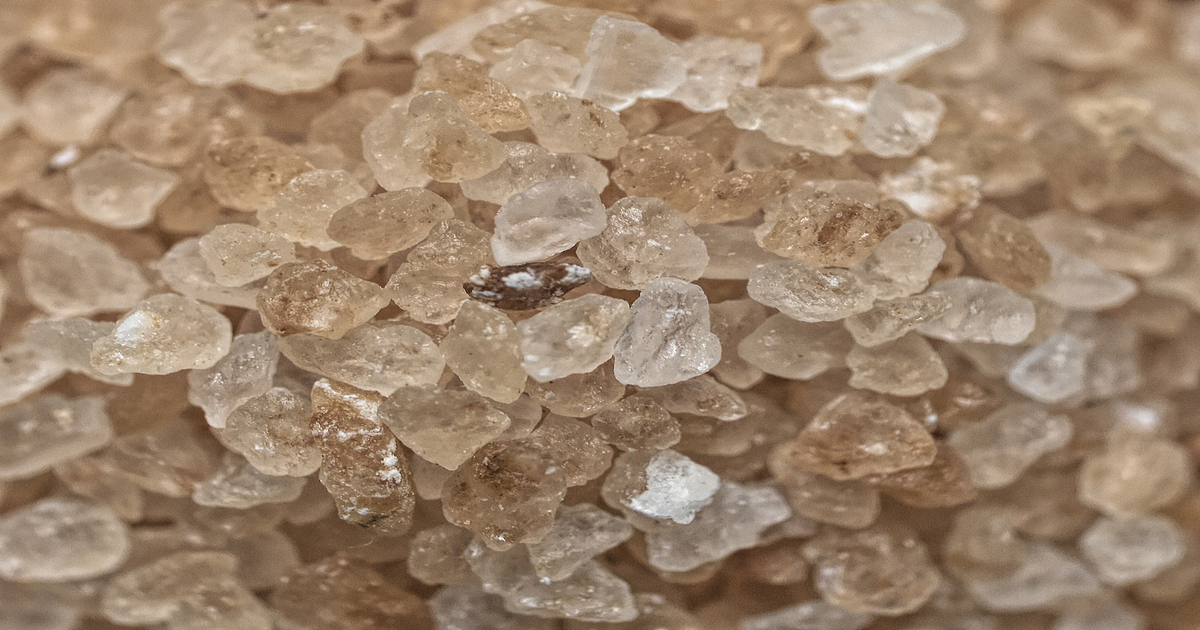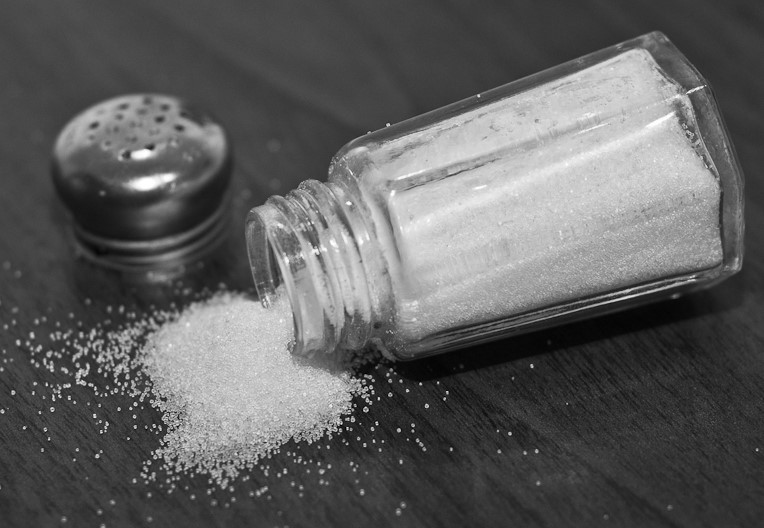Salt is the inexpensive staple used in cooking and garnishing food the world over.
There’s rarely a restaurant table or home pantry that doesn’t stock salt, whether as traditional processed table salt or other, more exotic versions.
Salt has been applied to food since before mighty civilizations started being recorded, and has a rich, vibrant history. Check out the following sweet facts about salt.

1. What role does salt play in maintaining the human body?
Salt is integral to human health as the major source of sodium and chloride ions in an everyday diet. Sodium is key to nerve and muscle function, and the regulation of fluids in humans.
Sodium also impacts the body’s control of blood pressure and volume. This is why elderly people with higher blood pressure have a tendency to suffer from headaches if they have a larger than average salt intake.
2. Salt control meant wealth
Salzburg, Austria, is the birthplace of Mozart and at one time the wealthiest city in Europe during the peak of Middle Ages Europe.
The reason? Salt.
This “Salt Town,” whose mines are still in use, provided Europe with the white gold needed to ensure that food kept from spoiling, and charged a pretty penny for the privilege.
Salzburg was also an important trading post for those transporting products along the silk road to Asia, as salt was just as valuable as gold and much lighter to transport.
The Republic of Venice dominated sea trade to Asia and built its great wealth in much the same manner – using salt as a valuable trading chip – despite being a small City State built on canals.
3. The colors of salt
While white sea salt may be everywhere, there are some brightly coloured varieties that you may not know much about.
Some of these niche colors include:
- Pink rock salt is the latest hip variety used in cuisine, but it’s exceptionally useful to use in cooking. The darker the hue of the salt, the more mineral rich the deposits from which it came.
- Black salt, found in Hawaii and Cyprus, which is useful for contrasting pale colored dishes and in augmenting subtle flavors.
- While quite rare, blue salt is mined in northern Iran and is the color of a cloudless day. It’s traditionally very expensive but complements and layers dishes that are naturally salty.
- While most think Hawaii’s geography is beautiful to behold, the truth is its geology is also amazing, thanks to the paths that rain, river, lava, and ocean cut through the landscape. Popular in meat dishes, red salt (or Alaea) is a kind of volcanic clay filled with a rich variety of minerals
- Grey salt is a hand harvested sodium chloride from the ocean reliant on sunlight and wind for evaporation. It contains less sodium than processed salt and is rich in iodine. It is popularly used for flavoring seafood

4. Are you worth your salt?
The expression to be “worth one’s salt” relates to your job competency and whether you’re worth what you’re earning.
The saying originated with the Roman Legion, where soldiers were paid partly in salt, or were allocated an allowance of salt with which to trade. Poor discipline, efficiency, and comportment resulted in cuts to the salt allowance.
In Ancient Rome salt was defined as sal and the payment practice known as salarium, the word from which the contemporary term salary is derived.
5. The most expensive salt in the world
The world’s most expensive salt is a Korean grey salt known as Amethyst Bamboo 9x, which could also double as the name of a cool animated TV show my kids watch on Netflix.
Amethyst Bamboo 9x can fetch almost $450 per pound in the US, and around $230 for a large jar a bit less than half that size.
The salt itself is strong (it is meant to be used sparingly, only with food), intensely flavored and mineral rich due to the amazing crafting process. The hand harvested sea salt is encased in bamboo and clay then heated with magma intensity nine times, until it’s rock solid in small crystals.
6. Salt on the Roads
The number one use of salt in the United States isn’t on food at all but on de-icing roads. According to the US Geological survey’s 2016 figures, just under 45 percent of salt went toward de-icing roads.
The benefit of salting roads is that it’s an effective method for preventing weather-related collisions. Rock salt helps keep roads safe when winter storms hit, reducing winter road accidents and breaks down dangerous black ice.
But road salt can also cause vehicle parts to rust and create negative effects on aquatic life of lakes and rivers, or create dead zones in various water bodies.

7. Why isn’t seawater boiled to make salt?
Seawater is not just the sodium chloride we use for table salt. It contains sulphates, carbonates and other minerals that mean purification is required.
You can’t get salt in commercial quantities purely by boiling sea water. An expensive, highly process of desalination needs to occur.
Desalination consumes a lot of energy in trying to obtain salt. Salt in sea water has very strong chemical bonds that are difficult to break, so desalination itself is an expensive process. Economically, filtering the water for use in different intensive situations is more useful, such as in arid climates like Israel or large populations like Singapore.
As the entire earth was under water at one stage, there are so many large scale sodium chloride deposits (such as the Atacama desert in Chile) that it’s a simpler, less labour intensive method to dig holes and mine for salt.
8. Salt has antibacterial properties
Salt kills some types of bacteria, effectively by sucking water out of them (I know it’s kind of gross, but think of experiments you saw where salt was applied to leeches).
During osmosis, water passes out of a bacterium so as to balance salt concentrations on each side of its cell membrane.
If you have a balanced diet rich in natural salts, and refrain from sprinkling on the white stuff, your body is better able to fight infection, and keep hydrated.
9. Table Salt in the US
According to leading research organisation Ibis World, the market size of the Table Salt Production industry in the US is $512.4 million annually, representing growth of 1.2% per year on average between 2016 and 2021.
It’s estimated that only 25% of salt consumed by people comes from table salt use, despite it being ever present. Most comes from food cooked and prepared by others or pre-packaged.
The primary negative factors that affect the table salt industry are demand from food manufacturing and high rate of importation from other countries. It will be interesting to see how the effects of COVID-19 relate to how salt is used in cooking and manufacture going forward.

Salt, it seems is always there. From your kitchen cupboard to the table at your local dinner or highbrow restaurant. Learning its history and facts are useful for trivia but also for understanding how the simple has contributed to society for more than 3,000 years.













